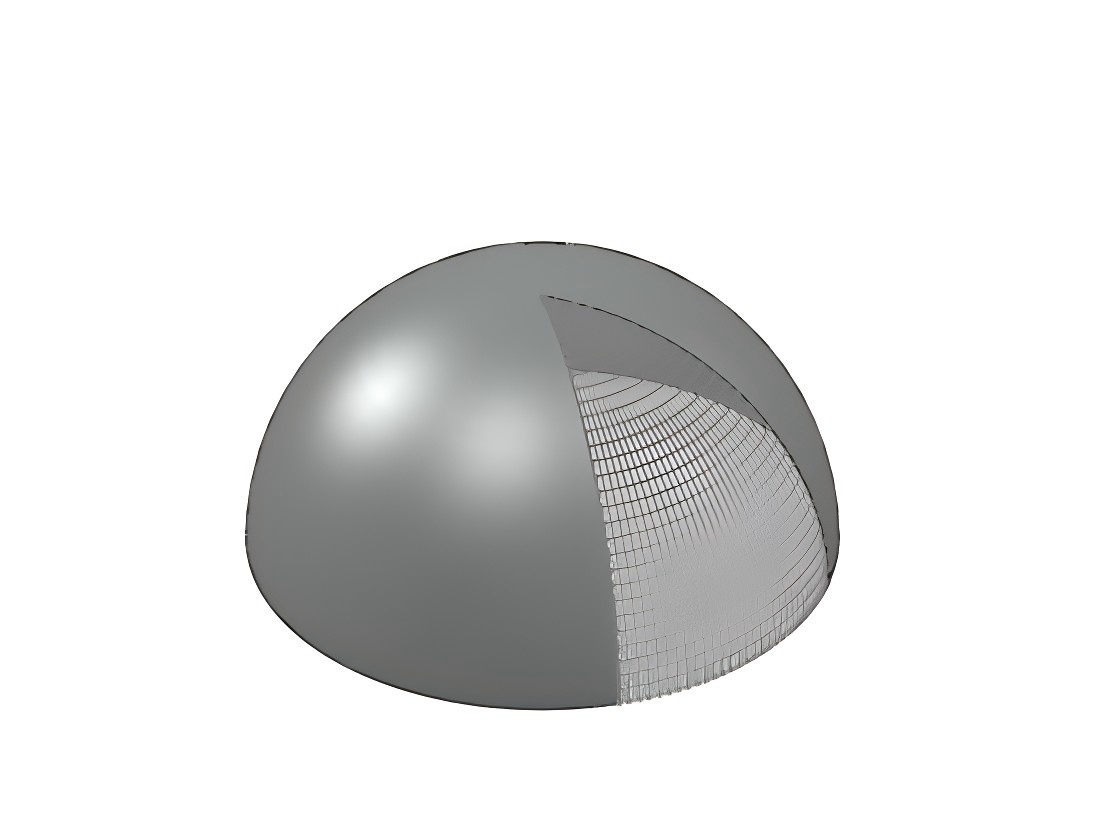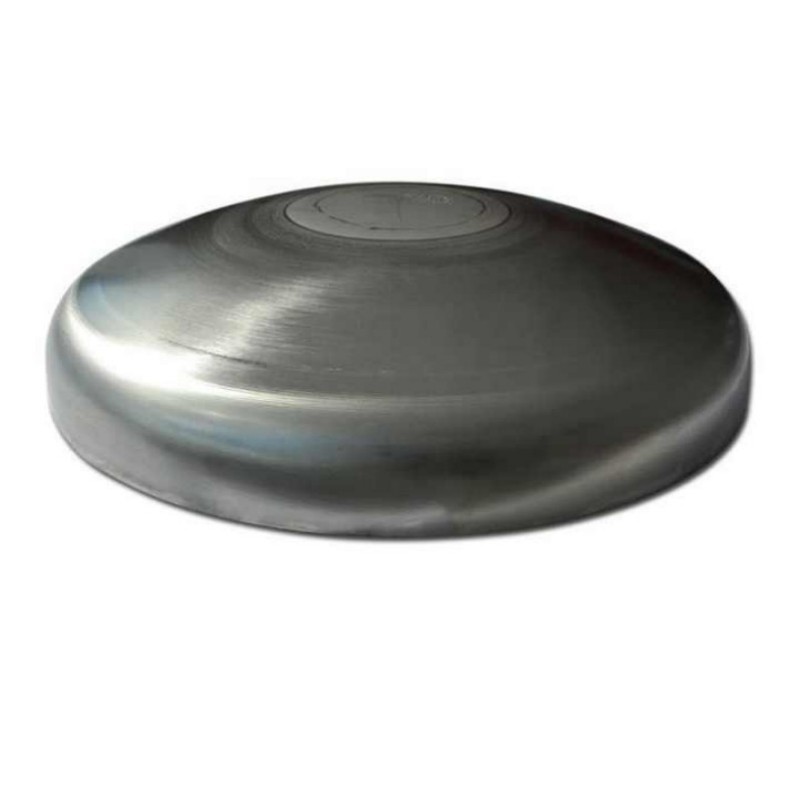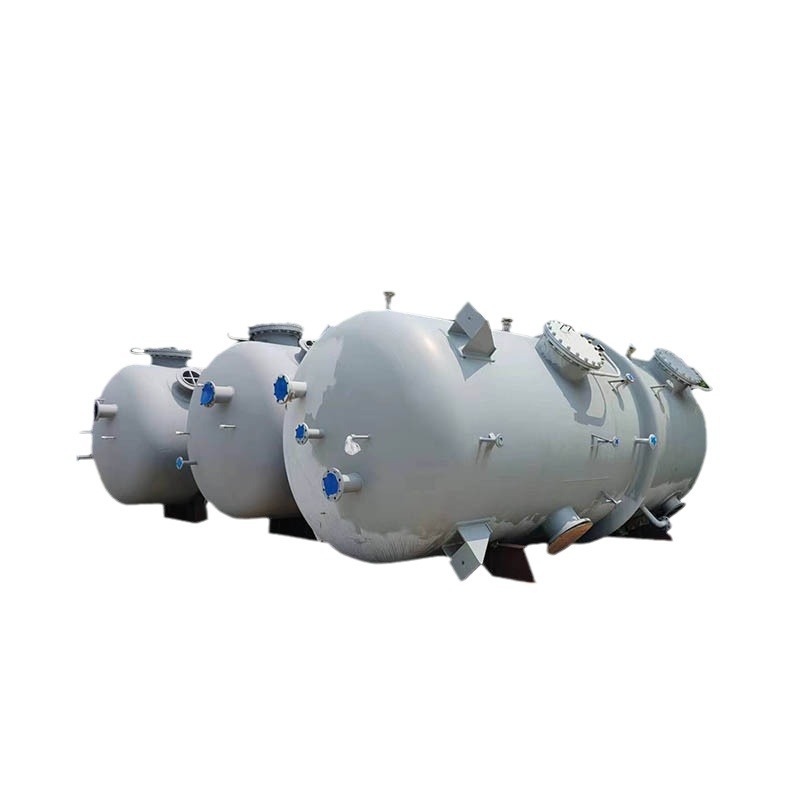Analysis of Cracking Failure Causes in Composite Board Heads
Upload Time:
Dec 09, 2024
During the manufacturing of a DN6200 composite plate elliptical head (hereafter referred to as the composite plate head), a company encountered repeated instances of cracking. The head's base material (outer layer) is 16MnR carbon steel with a thickness of 20 mm, while its inner wall material consists of 316L stainless steel with a thickness of 4 mm. The head has a diameter of 6200 mm.
Due to the large size of the head and the limitations of the existing steel plate width specification of 2.2 meters, the manufacturing process prioritized maximizing the use of stainless steel scraps. Initially, stainless steel plates were manually welded using arc welding. Subsequently, three stainless steel plates and three carbon steel plates were joined using explosive welding to create a composite board. The composite boards were then manually arc-welded to form a single composite plate blank.
The composite plate elliptical head was shaped using a cold spinning process. To investigate the cause of cracking in the composite plate head and develop effective countermeasures to prevent similar issues in the future, engineers conducted an in-depth analysis.
1. Analysis of the Inner Wall of the Composite Plate Head
The damage to the inner wall of the head was confined to the splicing welds between stainless steel plates 1 and 2. No issues were observed at the splicing welds of the composite plate itself. The cracks on the stainless steel splicing welds were located in the center depressions of the welds and were primarily caused by overload tearing due to excessive plastic deformation.
Analysis of the Outer Wall of the Composite Plate Head
On the carbon steel side of the outer wall, cracking was accompanied by visible signs of excessive deformation, necking, and splitting. These deformations corresponded precisely to the splicing welds of stainless steel plates 1 and 2 on the inner wall. Observation revealed that the main crack surface aligned with the splicing welds of the inner stainless steel plates. Additionally, the crack propagation exhibited steps where cracks from different layers intersected.
This indicates that the cracking during the cold spinning process resulted from multi-crack source overload tearing. As the cracks propagated, they intersected with cracks at different levels, altering their direction momentarily before returning to the primary crack’s path. This primary path corresponded to the inner wall’s stainless steel splicing welds, highlighting that this weld area was the weakest point in the composite plate.
The main fracture displayed a distinct stress rest line, indicative of a fibrous plastic fracture caused by repeated overloading and deformation. The fracture originated from the stainless steel plate’s inner wall and extended into the carbon steel substrate. Upon close inspection, multiple crack sources were identified on the stainless steel plate, confirming that the main fracture was a multi-crack source failure.
Microanalysis
The composite plate elliptical head was shaped using a cold spinning process. To investigate the cause of cracking in the composite plate head and develop effective countermeasures to prevent similar issues in the future, engineers conducted an in-depth analysis.
1. Analysis of the Inner Wall of the Composite Plate Head
The damage to the inner wall of the head was confined to the splicing welds between stainless steel plates 1 and 2. No issues were observed at the splicing welds of the composite plate itself. The cracks on the stainless steel splicing welds were located in the center depressions of the welds and were primarily caused by overload tearing due to excessive plastic deformation.
Analysis of the Outer Wall of the Composite Plate Head
On the carbon steel side of the outer wall, cracking was accompanied by visible signs of excessive deformation, necking, and splitting. These deformations corresponded precisely to the splicing welds of stainless steel plates 1 and 2 on the inner wall. Observation revealed that the main crack surface aligned with the splicing welds of the inner stainless steel plates. Additionally, the crack propagation exhibited steps where cracks from different layers intersected.
This indicates that the cracking during the cold spinning process resulted from multi-crack source overload tearing. As the cracks propagated, they intersected with cracks at different levels, altering their direction momentarily before returning to the primary crack’s path. This primary path corresponded to the inner wall’s stainless steel splicing welds, highlighting that this weld area was the weakest point in the composite plate.
The main fracture displayed a distinct stress rest line, indicative of a fibrous plastic fracture caused by repeated overloading and deformation. The fracture originated from the stainless steel plate’s inner wall and extended into the carbon steel substrate. Upon close inspection, multiple crack sources were identified on the stainless steel plate, confirming that the main fracture was a multi-crack source failure.
Microanalysis
Further microanalysis was conducted to delve deeper into the material and structural factors contributing to the cracking.
Relevant News







